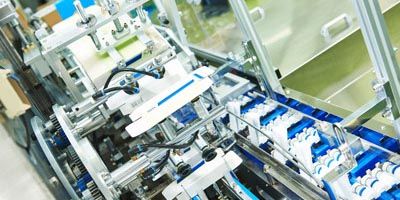 Pharmaceutical processes are not always optimized for speed. Double checks, red tape, and multiple approvals make sense in an industry where a simple mistake can result in serious illness. Or maybe even worse. Drug manufacturers and distributors have long searched for ways to streamline pharmaceutical processes. Machine vision is helping to improve efficiency while meeting strict consumer health and safety regulations.
Pharmaceutical processes are not always optimized for speed. Double checks, red tape, and multiple approvals make sense in an industry where a simple mistake can result in serious illness. Or maybe even worse. Drug manufacturers and distributors have long searched for ways to streamline pharmaceutical processes. Machine vision is helping to improve efficiency while meeting strict consumer health and safety regulations.
How Machine Vision Is Used for Pharmaceuticals
Machine vision is more than just a camera capturing still images. It gives an automation device the ability to observe its surroundings. When the images are sent for processing utilizing a computer vision system or right within the camera using a smart camera, decisions can be made that would normally require human involvement. And those decisions can happen faster with higher efficiency and accuracy.
To get an edge on the competition, many pharmaceutical companies have found creative ways to use machine vision. Two critical uses are packaging and tracking. Machine vision lets producers inspect the quality and condition of products before they are packaged. This includes counting the number of pills and checking each pill for shape, size, and damage.
Even after drugs are packaged and shipped, the manufacturer’s work isn’t over. Medications must be traceable from the manufacturer to distribution centers and from stores to consumers. If any risks such as side effects or contaminated drugs come up, producers must contact customers fast. Machine vision is used to scan, verify, and record barcodes with tracking information.
Machine Vision Streamlines Pharmaceutical Processes
One way that machine vision is being used is to digitize and record data. Historically, pharmaceutical companies have used numerous printed forms to collect data on their products. Machine vision has helped researchers and practitioners to digitize clinical trial documents, patient reports, medical records, and lab notebooks.
Machine vision automation also boosts the efficiency of pharmaceutical inspection processes. Manual inspections are inherently slow. As machine vision technology advances and camera imaging rates get faster, pharmaceutical inspection speeds up. This is helping to improve the efficiency of pharmaceutical manufacturing processes.
Further productivity improvements come from the need for less labor during the inspection process. Every year, it becomes easier for integrators and operators to add machine vision technology to their facilities and production lines. Productivity gets an additional boost thanks to lower operating costs.
Ask the experts at Phase 1 Technology for help selecting the right machine vision camera to streamline your pharmaceutical processes.
